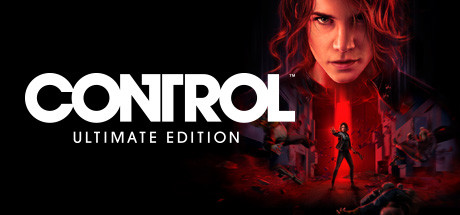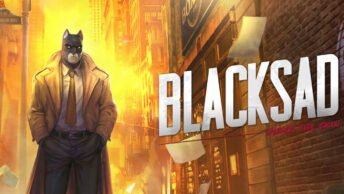Uncontrollable AAA top quality.
Type: Singleplayer
Genre: Action, Adventure
Developer: Remedy Entertainment
Publisher: 505 Games
Release date: 27 Aug, 2020

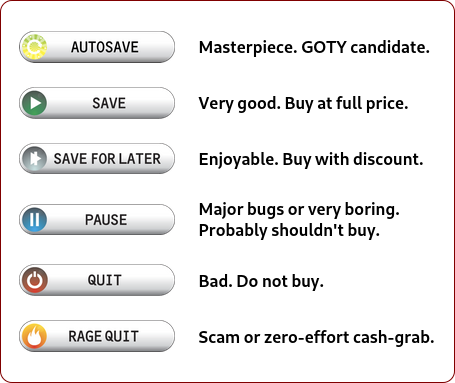
Overview
I made the mistake of ignoring Control over a year ago. Remedy’s reputations hasn’t grown on me since 2010’s Alan Wake. The spin-off “sequel” Alan Wake: American Nightmare was terrible and frankly, an insult to the franchise. Quantum Break came along as one of this (ending) generation’s debut title and it wasn’t a very hot comeback either. So when Control was announced I easily dismissed it until great reviews came along and my interest spiked – even more so when the steam release dropped with all the content.
So here I am having my own dismissive thoughts and words as dinner, because Control is not only a fantastic game, but also one of the finest single-player experiences I’ve had in quite a long time. Yummy, yummy words.
Story – A Poster
Control plays well to its simplicity. Playing as Jesse Faden, you arrive at the Federal Bureau of Control (heh) in the very beginning of the game, in a search for answers that Jesse has been longing to get for years about her past. Things quickly turn sour as Jesse notices the Bureau isn’t in the calm and collective state it should be in and something has gone wrong. After meeting some characters, some dead and some alive, the quest becomes clearer despite being different than the original intention: clearing the Hiss invasion and try to also collect those answers in the middle of the chaos.
Happening at the Oldest House – the name of the Bureau’s building – the story of Control is a simple affair. This doesn’t mean it’s easy to understand, though – the core idea of the plot and environment is quite simple, it’s the lore and the physical and reality-bending rules inside the Oldest House that add the complexity and detailed world that Remedy usually excels at creating.
What starts as an interesting yet grim mystery soon turns into a mindbendingly awesome story wrapped about a very obtuse yet well designed and explained set of rules. The Oldest House is a building that shifts, changes it’s looks and is even invisible to those who don’t seek it. It’s part of the reason it took Jesse so long to find and now that she’s finally in, it’s corrupted by the Hiss – an evil entity that has contaminated most of the building and possessed the Bureau’s staff which will become Jesse’s enemies throughout the game.
Control not only introduces the Hiss quite fast but also hints at the supernatural abilities of certain objects that are present in our lives – Objects of Power (OOP), Altered World Events (AWE) and even Altered Items. These are all explained and detailed so well by not only several pieces of collectible notes (seriously – there are a lot, I’d dare to say hundreds in total) but also (and especially) through video archives that starr Dr. Casper Darling, FBC’s head of research and the main scientist behind all the investigative progress of these items and events in our world. He explains it so plainly and so well, I felt I was in a regular college lecture and everything clicked and made sense almost to the point of being believable. Darling is so well acted and the writing supports him so much that the lore behind the supernatural and reality-bending events in Control’s universe become its most powerful asset in immersion and not the story/plot itself.
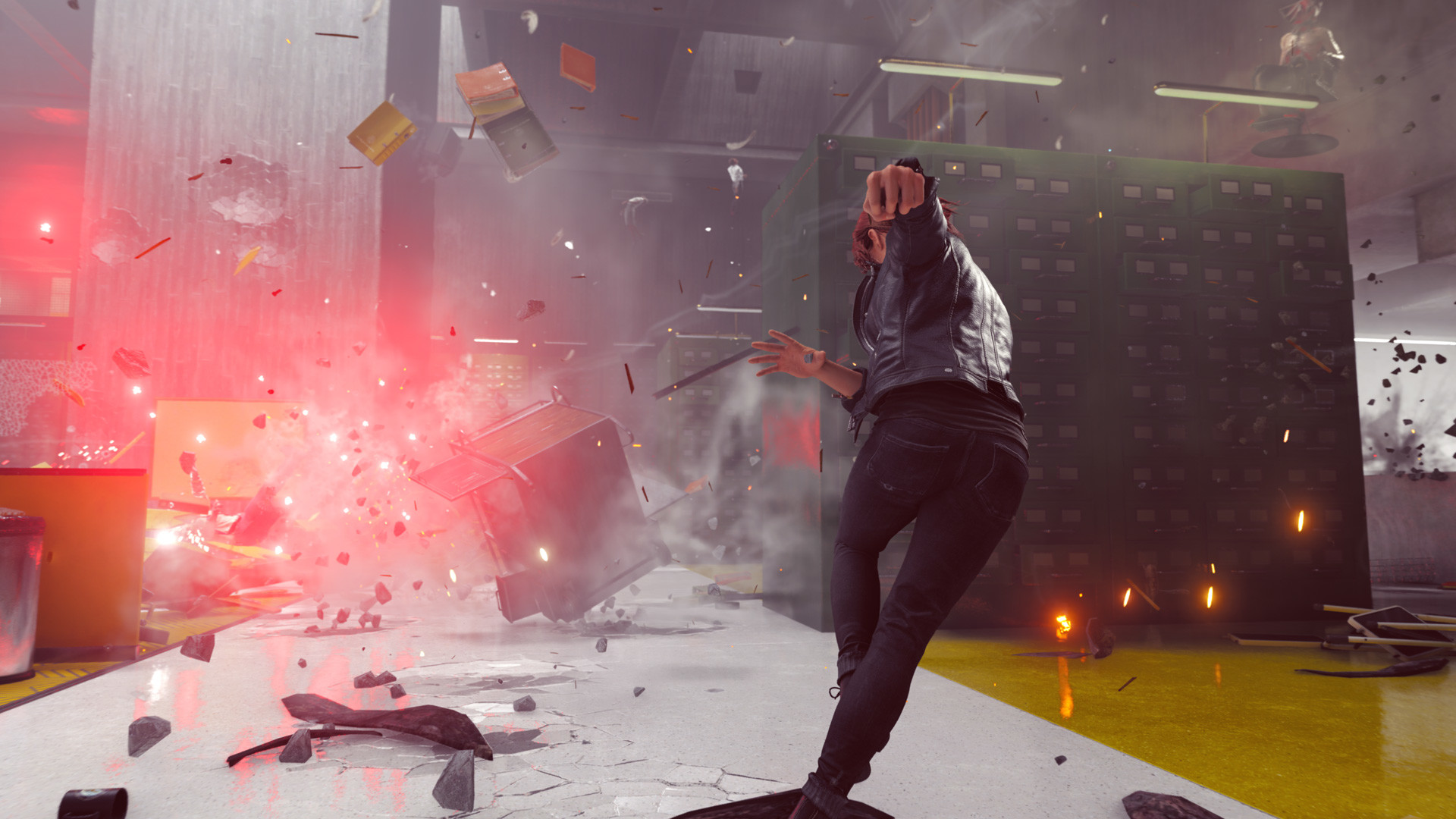
Jesse starts rather bland as her secretive past feels derivative as we only learn what happened much later on and it feel like it was kept from the player to further the mystery rather than being an organic flow of information to the player. I was far more interested in finding more logs of Darling’s explanations, documents and reports of events in the world and the consequences of these objects and events. The story itself only really turned truly interesting when the lore and the plot started mixing in a clearer manner (which happens coincidentally when Darling’s videos and involvement in the events prior to Jesse’s arrival become much clearer leading me to claim Darling as my favorite character in the game, alongside Jesse that become a much more compelling character later on).
Overall, the main story of Control is fantastic because of how tight and well constructed the universe is – every event is interesting even if it’s only mentioned in documents. The development of Jesse as a character also translates into the development of Bureau as it gradually clears the Hiss and tries to understand all the phenomena that are affecting the Oldest House.
And then we still have the expansions – as this is the Ultimate Edition, 2 major expansions are also playable: The Foundation and AWE which both bring not only new story bits and lore but also gameplay additions that feel fresh and nostalgic at the same time (more on that later). I’ll approach the DLC’s on separate sections of the review as I feel I should talk about the main game, story and gameplay wise first before approaching the expansion content.
Gameplay – Dynamite
Control is the best Jedi game never made. What at first seems like a standard run-of-the-mill third person shooter suddenly (and gradually) becomes the finest and smoothest superhero-like experiences I’ve ever had.
After acquiring a gun – which coincidentally happens to be an Object of Power (the Service Weapon), Jesse can bend the gun to fit a playstyle she prefers at any situation; this translates to a system I can last remember seeing in Hard Reset – you have a gun but that gun can shift its purpose into many other “sub-weapons”. While you start with a simple pistol at first (that packs quite a punch even early on), the Service Weapon can be upgraded with resources into other versions of itself, including a Shotgun, SMG, Rocket Launcher and even a Railgun.
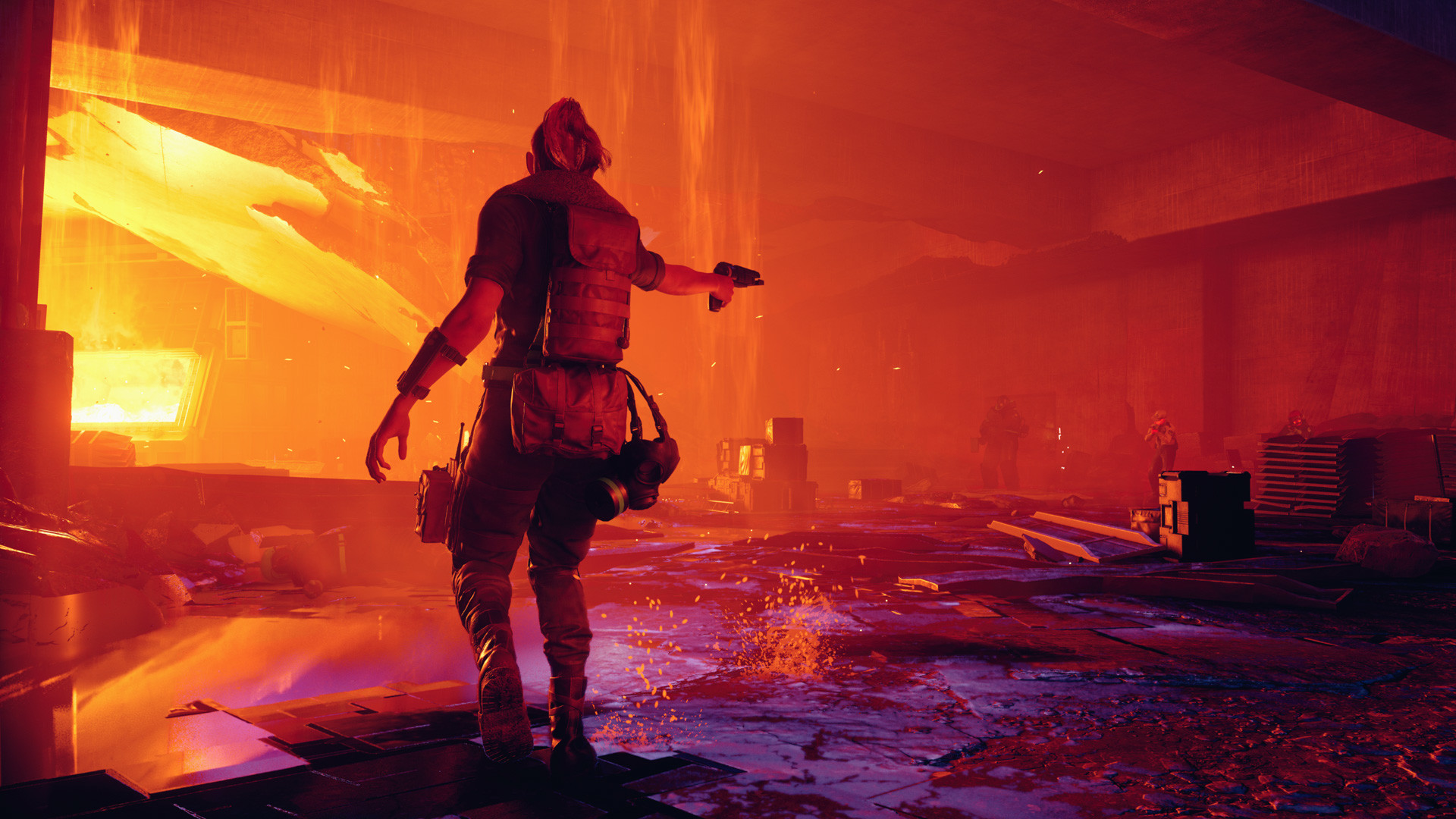
All guns serve a purpose and can be further enhances through mods. Mods are collectible loot items that have a rank (From I – Common to VI – Infinite) that determines how strong that mod will be. What is at first minor percentage based upgrades (Such as +20% Headshot damage) can become +50% Rate of Fire or +90% Damage by the end of the game – one of my favorite pairings was a shotgun with barely no spread and +5 pellets and a grenade launcher that had the blast radius of an office room and could stick to enemies causing domino effects on entire conga-lines of enemies.
The only criticism I have of the gunplay itself is that “pairing” I mentioned above: you can only carry two Service Weapon variants at a time. This makes perfect sense from a balance standpoint but can’t help but feel quite disappointing and almost unfair for certain variants – the game happens inside a single (gigantic) building so there’s hardly any point to carry the railgun when most of your combat will be in close to medium range where a shotgun, a grenade launcher or a simple pistol will be far more competent and allow for more varied playstyles than the railgun which is extremely situation, leading to you using the other gun in combat sequences that are far more close quarters. The Service Weapon also looks like a pistol for the most part, despite all the variantsit possesses – it’s an aesthetic choice that makes sense but also feels lacklusters as you’re literally carrying a single pistol-looking weapon the entire game that doesn’t change looks much despite its variety of transformations.
Overall these are minor gripes as one is visual and the other is a need for balance. It’s sad that I didn’t see a use for the railgun in the game but the rest of the weapons all seemed to have a role in the combat that makes them viable for almost any scenario, especially with the presence of mods that can fundamentally change how you approach a combat scenario depending of the weapon variant and mod combination equipped.
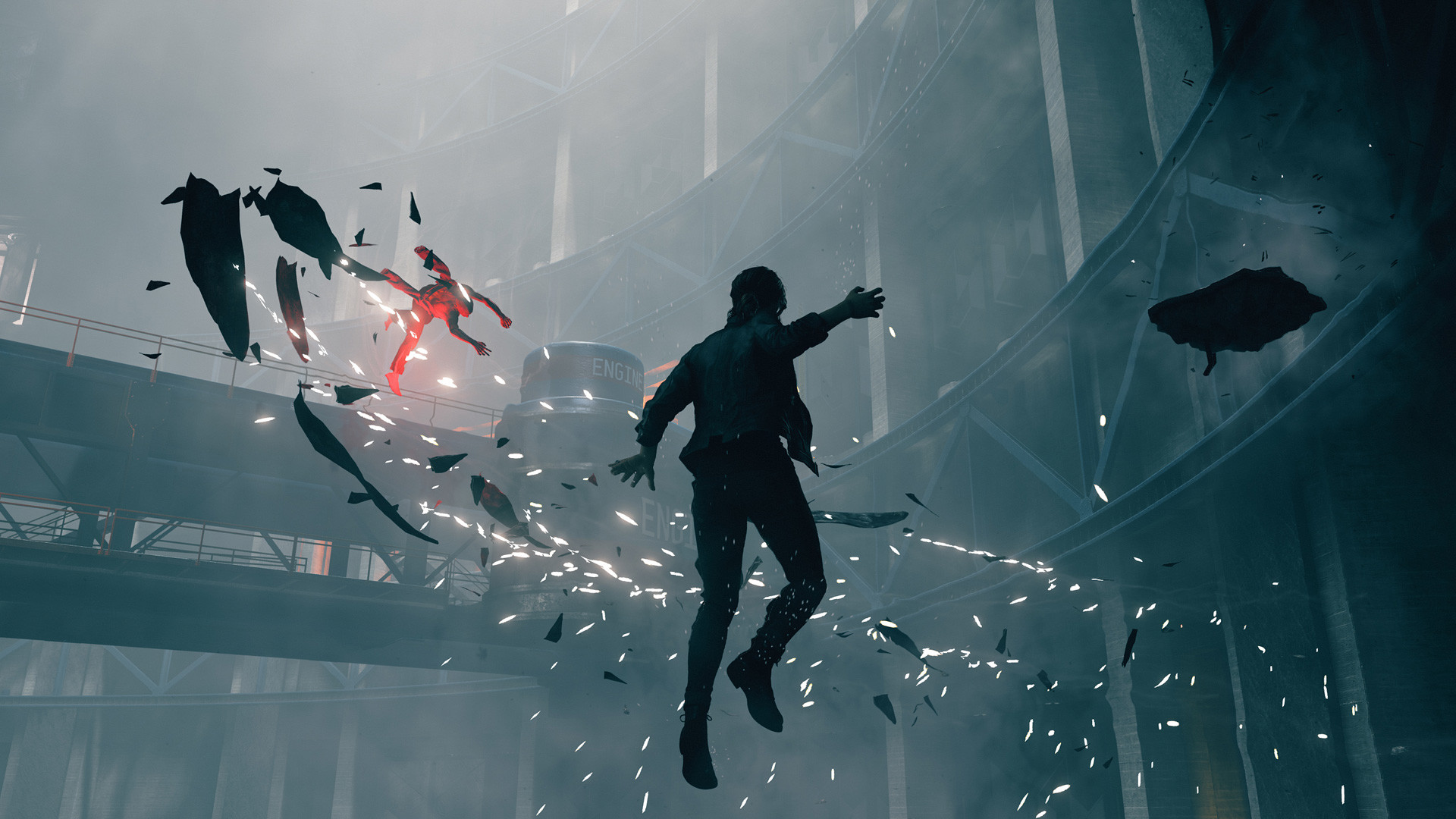
Combat isn’t just about shooting, though. Throughout the game you’ll have missions you can complete; while these are not directly/obviously tied to the main questline, I recommend you explore around to do them as they give ability points and even brand new abilities to enhance Jesse’s combat performance. While most of these abilities are quite standard for what you’d expect for a supernatural game, they are all brilliantly crafted and balanced, making the combat an exercise of skill and resource management that I absolutely adore. From the typical shield that you can activate and defend from projectiles (later on you can even throw the shield or even bullrush an enemy with it to knock him down), to the vital and fantastically smooth Levitate, Jesse can fly, hover, shield herself, throw objects at enemies and even possess them and it all feels and controls phenomenally – never did I feel like the level design restricted me from using these abilities and I even managed to find some secrets areas through exploring and sweating all my ability combinations out of curiosity – only to be met with a cool secret that the developers actually thought about!
Combat is extremely fluid due to these well crafted abilities and extremely detailed and destructible environments – everything can be broken, from tables to chairs to boxes and even walls to create new routes to flank your enemies or escape from a tough fight to catch a breath. It is easily one of the most organically detailed and well thought out pairing of a fluid combat system and a well crafted and highly detailed and destructible level design I’ve ever seen in my life and makes the game a complete joy to play throughout its 25-30 hour journey (more for completionists) that doesn’t feel repetitive as you won’t just be fighting – exploring the very detailed environments of the Bureau for collectibles, easter eggs and even brand new side quests is very encouraged – to break off the fast paced action, Control also contains a considerable amount of puzzles that will force you to make clever use of your abilities to complete some of them – some may need the usage of abilities you may not even own yet as the game has a strong metroidvania component that can make certain parts completely innaccessible should you miss important side content – thankfully none of that side content is time or progress limited as you can complete it at any time, even after finishing the game!
Control occurs in the Oldest House as I previosuly said and while Remedy tried very hard (and successfully for the most part) to add environmental variety to a Bureau building, the game can have quite repetitive environments after a while, especially since it has an open world aspect tied to it, you’ll often have side quests or even repeatable missions in places you previously explored, furthering the environment repetition. While this feeling was minor throughout the game, it was still present enough to warrant a warning to those hoping the game to change its scenery to something entirely different. Enemy variety isn’t all that brilliant either as you’ll encounter mostly 3 enemy types – ground, flying and shifting enemies. Ground enemies are more typical soldiers – from the typical security guard and his crappy pistol to the behemoth minigun wielding brute; some supernatural enemies exist but they just do what the ground ones typically do – hurl objects at Jesse. Flying enemies throw objects at you as I’ve already mentioned (though in DLC’s you’ll encounter flying soldiers which provide quite a challenge) and shifting enemies that either turn invisible for surprise attacks (use explosives to damage them and reveal their location, the blast radius reveals them if it hits them) or simply dash around quickly to throw off your aim.
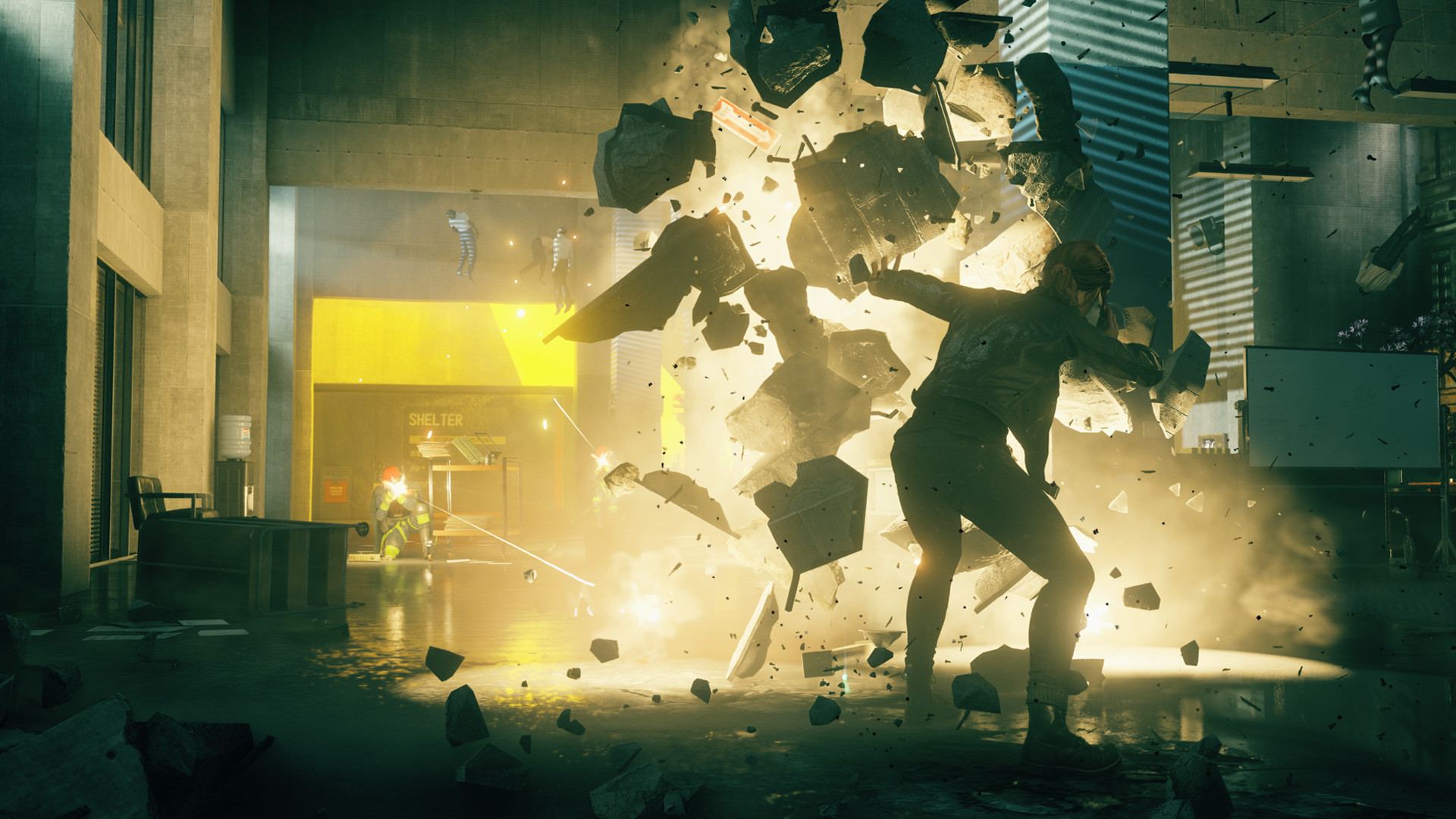
While the enemy variety is superior to the one present in similar games (especially more traditional third person shooters) I felt the game had everything thrown at me by the mid-game and this combined with the occasional environmental repetition created a couple dull moments that didn’t ruin the experience much but were still a factor to notice to anyone reading and expecting a lot of variety – something Alan Wake suffered from as well. Thankfully (and unlike Alan Wake), Control boasts a considerable amount of boss fights that were VERY enjoyable to play, esseJ being my personal favorite – my favorite test of skill in the entire game.
While it may seem like Control has a lot of flaws it’s most just little nitpicks that stop the game from barely being pretty much perfect – Control is still one of my favorite games to play due to how fluid the combat is and how well crafted the combat arenas and levels are. The supernatural elements of the story blend perfectly with the gameplay and make for a rich and interesting thrill ride I doubt I’ll forget any time soon.
The Foundation
The first expansion of Control that also can only be played post-completion of the campaign – expandin your arsenal with a new ability and a brand new area of the Bureau – the underground section of The Foundation, Jesse must figure out the threat that lurks right below the building she’s protected throughout the entire main campaign. The Foundation manages to bring new lore that is just as interesting (and I thought the game already had all there was to talk about…).
Gameplay additions also constitute not only 2 new abilities (which unfortunately you have to decide which one you prefer to add to your arsenal) but also a new enemy type that is nimble and accurate which can attack you both in close range and long range (don’t think flying will protect you from those axes, they can throw and they hurt quite a lot!), being a great addition to the combat roster of Control, adding enough fresh elements to make the combat feel even deeper while also not overstaying its welcome as the DLC has a perfect array of main and side quests that don’t take too long to complete on the rocky environments of The Foundation.
Awe
What can be easily “memed” as AWE – Alan Wake Expansion (Remedy, you bastards – you wanted this all along didn’t you?) – this DLC is, in fact, a universe crossover between Alan Wake and Control and while I do think the overall feel of the DLC is a bit too rushed and “fan-service”, nothing about it was poorly explained or illogical. I do think a couple more missions to pace the overall story and cross-over development better would be great, nothing about AWE really misses the mark – it blends these 2 fantastic universes brilliantly and yes, it teases a possible Alan Wake sequel.
God, please, make it happen.
Overall, AWE is still a great expansion that adds a lot more lore due to the Alan Wake universe additions (already teased in the base game) and also nostalgic gameplay additions (the “Darkness” is back so you’ll be back to flashing lights on darkness concentrations to progress through the game or find further loot mods).
Technical Aspects (Graphics & Audio)
Probably the best looking game I’ve laid my eyes on. It’s not all that interesting at first – come on, it’s a building!
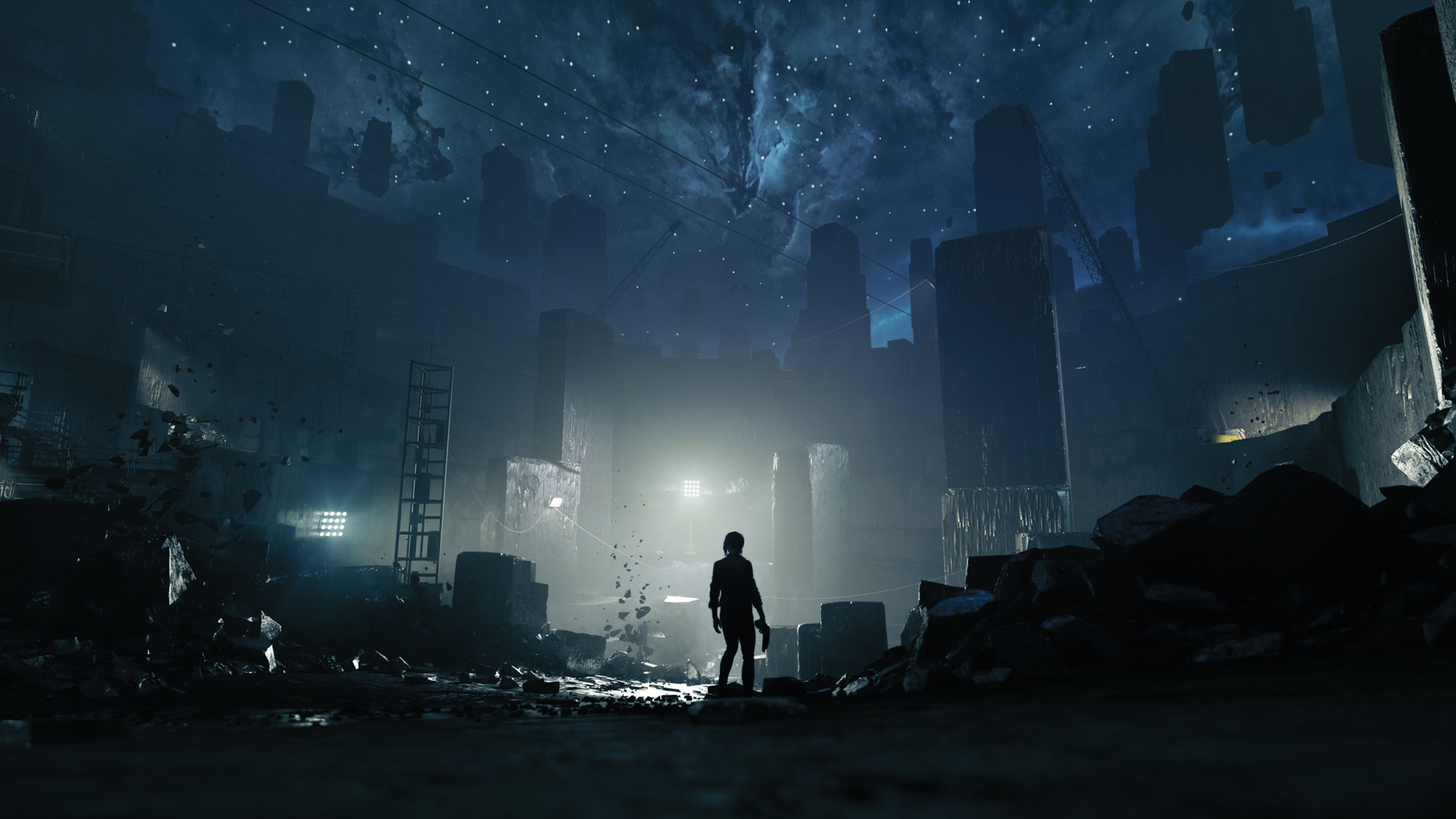
As you go on and truly notice the detail of levels: all the lamps, chairs, tables, flower pots you can throw at enemies, all the paper sheets flying around as you dash through an office window/wall to escape combat and transition to the office on the other side and everything falls with detailed physics – enemy spawns forcing you to make good use of cover and move around the environment to keep yourself a hard target to hit really shows how well crafted Control really was. A phenomenally detailed game that I can’t praise enough.
That is not to say the game looks bad visually to counter its level design – it’s the opposite, in fact. Control is one of the most beautiful looking games around – the lighting is phenomenal, the effects are stunning and the character models are extremely well detailed making the overall dialogue feel even more compelling to listen to. Animations are great and even Remedy’s typical live-action stuff (mostly in the form of Darling’s video logs) are phenomenally acted and extremely compelling to watch until the log ends. There isn’t a single component of Control’s visual aspect I can really complain about – the UI is extremely clean and very easy to manipulate and mess around to check whatever I need – switching mods, leveling up abilities or even the plain combat UI – everything is perfectly crafted with a visually striking look but clean and informative at the same time.
Audio wise, Control is a Remedy game so this means two things:
– Poets of the Fall will be here somewhere.
– Everything sounds great.
And as described above, Control ticks these two points with flying colours – a basic pistol feeling stronger than most sniper rifles in other games, dialogue that is expertly voiced and a fantastic soundtrack I’d give good money for that all together complement the phenomenal visuals, smooth gameplay and interesting story without a single criticism – something I haven’t had the chance to say on my time writing for SoQ.
Just… perfect.
NOTE: No, I did not play with Raytracing on as my GPU doesn’t support it so I can only imagine how even better it looks with it on (from videos and some searching the game does seem like a phenomenal raytracing experience but I can’t comment on it myself).
Conclusion
One of the best games of 2019 (and 2020 if you count the steam release as the true PC release, I suppose) – Control is one of my new favorite single player experiences I can wholeheartedly recommend to anyone looking for a unique and fun experience – the great length, solid pacing and fantastic story are just bonuses. Everything about Control is fantastic, a return to form for Remedy and for single player games for me, one of the absolute best games I’ve played in quite a while – one I haven’t had probably since 2017’s The Evil Within 2 which was my GOTY that year.

